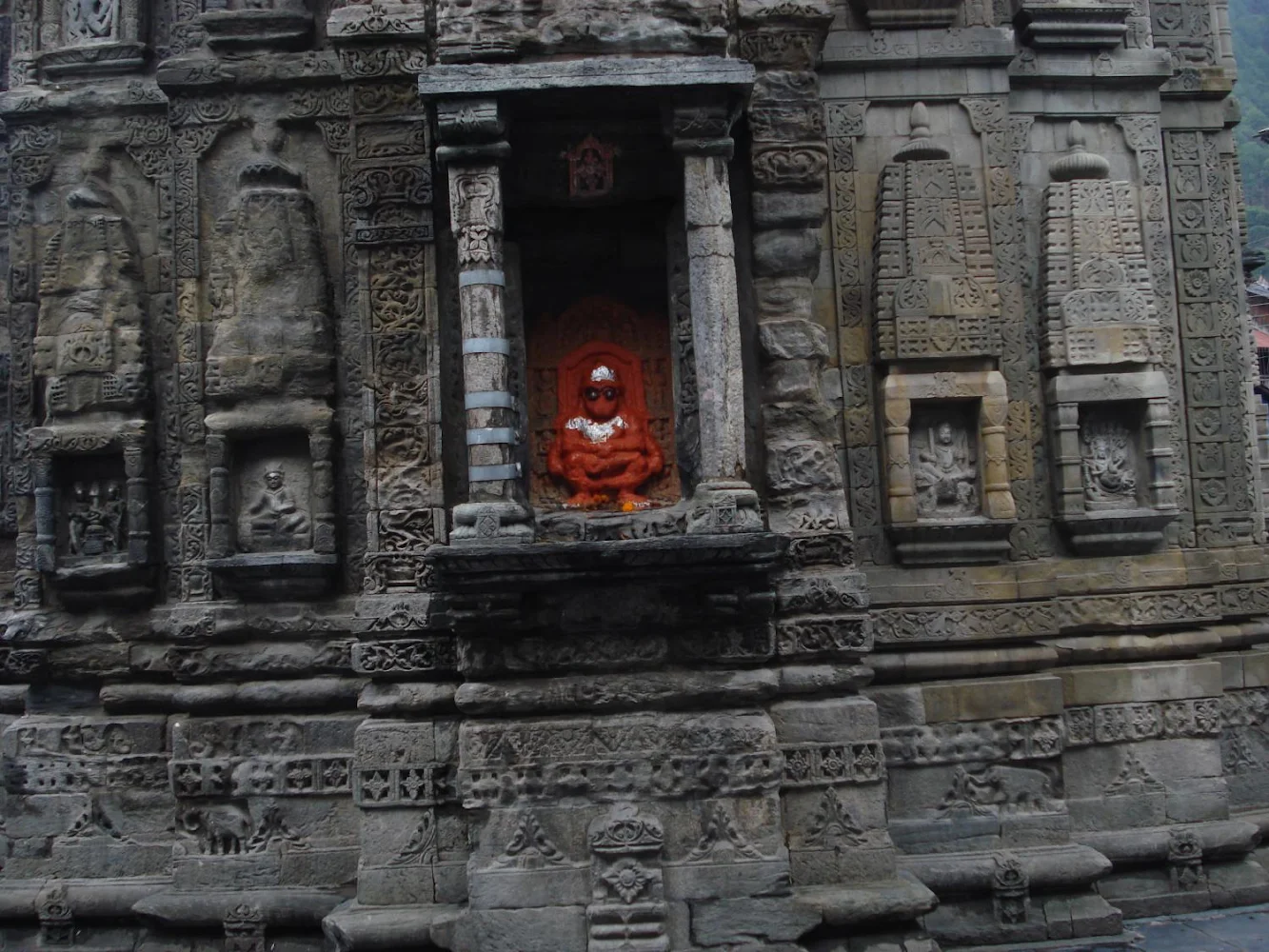Tilted pillars, cracked steps, and sliding stone canopies in a number of 7th-century A.D. temples in northwest India are among the telltale signs that seismologists are using to reconstruct the extent of some of the region's larger historic earthquakes.

to have occurred during the 1555 Kashmir earthquake [Credit: Mayank Joshi]
In their report published in Seismological Research Letters, Mayank Joshi and V.C. Thakur of the Wadia Institute of Himalayan Geology show how the signs of destructive earthquakes are imprinted upon the ancient stone and wooden temples.
The temples in the Chamba district of Himachal Pradesh, India lie within the Kashmir "seismic gap" of the Northwest Himalaya range, an area that is thought to have the potential for earthquakes magnitude 7.5 or larger. The new analysis extends rupture zones for the 1905 Kangra earthquake (magnitude 7.8) and the 1555 Kashmir earthquake (possibly a magnitude 7.6 quake) within the Kashmir gap.
The type of damage sustained by temples clustered around two towns in the region—Chamba and Bharmour—suggests that the Chamba temples may have been affected by the 1555 earthquake, while the Bharmour temples were damaged by the 1905 quake, the seismologists conclude.
The epicenter of the 1555 earthquake is thought to be in the Srinagar Valley, about 200 kilometers northwest of Chamba. If the 1555 earthquake did extend all the way to Chamba, Joshi said, "this further implies that the eastern Kashmir Himalaya segment between Srinagar and Chamba has not been struck by a major earthquake for the last 451 years."

[Credit: Mayank Joshi]
The stress built up in this section of the fault, Joshi added, "may be able to generate an earthquake of similar magnitude to that of the 2005 Kashmir earthquake that devastated the eastern Kashmir."
That magnitude 7.6 earthquake killed more than 85,000 people, mostly in north Pakistan, and caused massive infrastructure damage.
To better understand the historical earthquake record in the region, Joshi and Thakur examined several temples in the region to look for telltale signs of earthquake damage. It can be difficult at first to distinguish whether a tilted pillar, for example, is due to centuries of aging or to earthquake deformation.
But Joshi noted that archaeoseismologists are trained to look for regular kinds of deformation to a structure—damages "that have some consistency in their pattern and orientation," said Joshi. "In the cases of aging and ground subsidence, there is no regular pattern of damage."

The tilting is likely the result of the 1555 Kashmir earthquake [Credit: Mayank Joshi]
At the temples, the researchers measured the tilt direction, the amount of inclination on pillars and the full temple structures, and cracks in building stones, among other types of damage. They then compared this damage to historic accounts of earthquakes and information about area faults to determine which earthquakes were most likely to have caused the damage.
"In the Chamba-area temples, there are some marker features that indicate that the body of the temple structure has suffered some internal deformation," said Joshi. "The pillars and temple structures are tilted with respect to their original positions. The rooftop portions show tilting or displacement."
Other earthquake damage uncovered by the researchers included upwarping of stone floors, cracked walls, and a precariously leaning fort wall.
"The deformation features also give some clues about the intensity of an earthquake," Joshi explained. "For example if a structure experiences a higher intensity XI or X, then the structure could collapse. But if the structure is not collapsed but it tilts only, then it indicates that the structure experienced lower intensity of IX and VIII."
The Mercalli intensity scale is a measurement of the observed effects of an earthquake, such as its impact on buildings and other infrastructure. Scale measurements of VIII ("severe") and IX ("violent") would indicate significant damage, while higher scale measurements indicate partial to complete destruction of buildings, roads, and other infrastructure.
Source: Seismological Society of America [July 26, 2016]